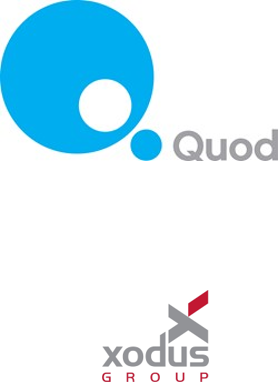Alistair Walker
CEnv, MSc, MSCi, MIEMA, MEnvSci
Senior Consultant
Quod

Quod, Temple Group, Liquorice, ODI Leeds and Connected Places Catapult (CPC), with backing from Innovate UK (a Government-backed funding agency for innovation and research), have recently completed a feasibility study to explore a future vision of how a better designed, data-informed and digitally delivered Environmental Impact Assessment (EIA) process might be beneficial for developers, planners and members of the public. The study identified the need for a wholesale digital transformation of the EIA process and sought to create a roadmap and recommendations to central government around how the sector can achieve this shift in practice. Full details and prototype concepts relating to the project can be found on the project website here.
This has been carried out in parallel with the IEMA Digital Working Group initiative to stimulate discussion around the changes needed in our current system and how we can start overcoming the barriers and obstacles ahead of us.
How can we transform the sector?
This project was carried out in three distinct phases; the first consisting of a technology and stakeholder review to understand the core elements and “pain-points” within the current EIA process. This explored the user journey through the process, and what ideas and/or products could potentially be applied at each stage to achieve digital transformation. Through stakeholder interviews and research, the project team identified seven interlinked components that underpin the EIA process and were identified as being core opportunities for further exploration. These were:
- Automated Screening
- Assisted Scoping
- National Environmental Data Hub
- Digital EIA Workspace
- Impact Modelling Ecosystem
- Interactive & Accessible ES
- Post-development Monitoring

Following feedback received from further consultation on the concepts, three of these were taken forward for further development with the creation of wireline user experience (UX) prototypes; these being the Data Hub, Digital EIA Workspace and the Post-development Monitoring. Finally, and in parallel to this process, interviews were carried out with government, regulators and other key stakeholders to better understand the financial, regulatory and technical obstacles to implementation of these concepts and how they can potentially be overcome.
Further details of these concepts can be found on the website or through the downloadable summary report.
The reality of making this happen
Key barriers identified were the current discrete and separate hubs of, and barriers to, data ownership; lack of legislative controls to ensure data and platform consistency and compatibility to maintain an open system; and a cultural shift in the application of EIA and the new range of skills and expertise required in both the private and public sectors to facilitate this change.
Key opportunities are the potential for a unified source of all passive and active environmental data; a far more streamlined, standardised and integrated IA process that proactively influences design; and the integration of monitoring feedback to improve current and future environmental performance and project efficiencies.
Through this process, we have reviewed the existing and emerging technology and tools in the sector that are attempting to provide a solution to some of these aspects. One example is where Xodus Group have developed and implemented a cloud-based software platform called ‘eBase’. This is a digital IA tool that facilitates the impact assessment process in a collaborative, standardised online platform that makes EIA more transparent and robust. It can:
- Store commonly used EIA data including activity and receptor descriptions, impact summaries, mitigation and guidance;
- Complete accurate, efficient and systematic environmental impact identification and assessment; and
- Develop reports.
While previously developed and utilised outside the UK, Xodus are applying this tool in the UK and demonstrating the potential of a Digital EIA Workspace.
Final word
Looking ahead to what needs to happen to stimulate a full digital transformation in reality, it is essential that private innovation works in full consultation with statutory public bodies and government to ensure that tools created to fulfil these needs are compatible and aligned with a fully representative and agreed vision for the direction of travel. This will ensure that this concept can be delivered at an institutional and nationwide scale in practice and is fully accessible to all stakeholders, and avoid a potential ‘wild west’ scenario of siloed products creating new technical or financial barriers to widespread adoption. IEMA can act as a bridge to facilitate these discussions. In relation to this project, it is likely that relevant funding institutions will seek to understand and develop each of these concepts further in liaison with regulators and Government with a long-term vision of having fully integrated digital tools aligned to a government policy framework. This should create a common digital EIA space that allows for innovation of new tools and working practices.

